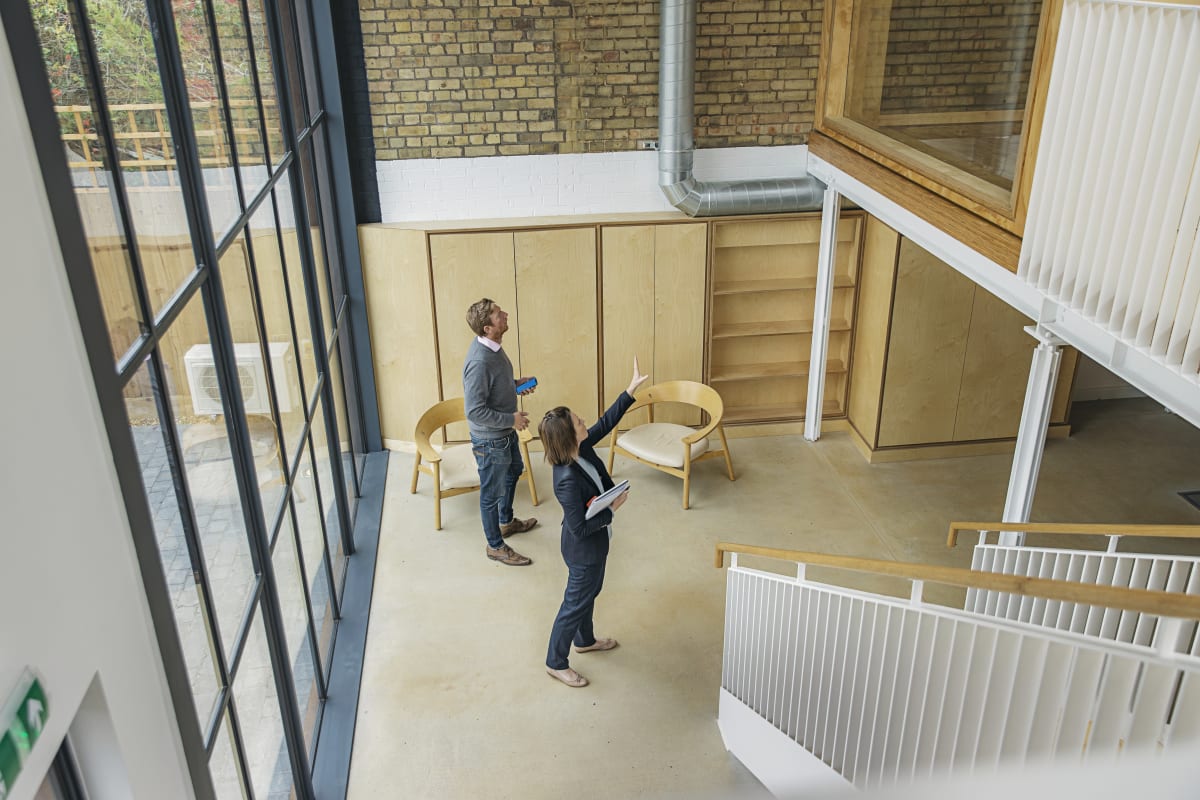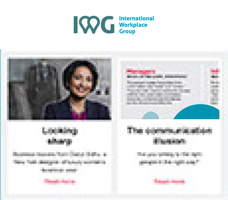People are increasingly exploring life outside of major cities. IWG’s latest study shows that outbound migration from US cities is up 59% compared to pre-2020 levels, with almost half a million set to leave. This trend is not exclusive to the US; similar shifts are occurring elsewhere. For instance, in the UK, domestic migration to smaller cities and rural areas is also accelerating compared to pre-pandemic levels.
One of the reasons for this trend is hybrid working. The model, with its innate flexibility, has grown in popularity with over half of UK workers (53%) and 40% of global workers now balancing their time between a local flexspace, home and a central office. And because they don't need to spend as much time in the cities, employees are able to reconsider where they spend their time, with many relocating to the suburbs and beyond.
The benefits of hybrid
The rise of hybrid working isn't surprising given its many benefits. Employees commute less, and so have more time for exercise, preparing healthier meals, and enjoying restorative sleep, which boosts their health, happiness, and productivity. There are also several advantages for businesses. With workers spending less time in their central headquarters, companies can downsize their property portfolios and rely more on flexspaces, which helps to cut overheads. This shift also helps businesses meet their sustainability targets, as emissions associated with office buildings and commuting are significantly reduced.
Local communities in small towns, suburbs and seaside communities stand to benefit too. UK mobile phone data shows that footfall in these areas has increased by 50% since the pandemic, figures which could generate annual increases in local consumer spending of $1.3 billion in the U.S. and £327 million in the UK. In short, everybody benefits.
What this means for our cities
But what does hybrid working mean for our cities, and for the future of office space in urban areas? IWG’s Mark Dixon comments: “Hybrid working is changing the geography of work, allowing easier access to the best talent, invigorating local economies and enriching communities. Not only this, but it’s set to change the role of cities forever. Places like London, whose economy has been geared to meet the needs of millions of itinerant office workers, will need to evolve to become hubs for collaboration and entertainment.”
This transformation presents exciting opportunities for city centre landlords, property investors, and franchise holders. So, let's delve into five key trends that are set to steer urban property into this new era of work.
1. Convert empty space into thriving flexspace
The flexspace market is booming — it's projected to grow by 600% by 2030 — driven by businesses that increasingly seek cost-effective, efficient, and sustainable solutions to accommodate the dynamic nature of their workforces. As they shy away from long-term leases, shorter arrangements with flexible workspace providers are now preferred by the overwhelming majority.
To address the rising demand, IWG is not only developing expansive facilities in urban centres but also adding smaller workspaces in suburbs and commuter towns. With plans to launch up to 1,000 new locations within the next year, commercial real estate professionals have a prime opportunity to partner with the company.
2. Develop residential spaces
Converting office buildings into residential spaces can address the housing shortages and urban density concerns felt in many cities around the world. Offices can easily transition to co-living spaces — private studios with shared amenities — which are gaining traction because they blend the advantages of community living without the common drawbacks of shared housing.
3. Recycle buildings
It sounds radical, but ‘urban mining’ is a process in which many of the materials used to build offices are dismantled and reused elsewhere, helping construction firms reduce carbon emissions. Spaces Gasperich is an example of this. It’s used by HSBC as its headquarters in Luxembourg, and mainly uses materials recycled from other HSBC offices – meeting the BREEAM certification of excellence standard in the process.
4. Create new leisure and entertainment spaces
Building on Mark Dixon's insight into cities evolving as centres for both work and leisure, there's a significant opportunity at hand. Unused buildings can be turned into places for fun and relaxation, like food halls that bring the community together. In Arlington, Virginia, empty offices are now becoming breweries, labs, and gaming arcades. And in the Canadian city of Calgary, one company is even trying out vertical farming in a vacant commercial space.
5. Convert them into data centres
With the rise of 5G, cloud computing, AI and machine learning, and the expanding IoT ecosystem, there’s a surging demand for data centres. Disused office buildings are ideal, as they have already power and connectivity, while their central location can help reduce latency.
A world of opportunity
Times are changing, but the opportunities are still plentiful for landlords and property investors. The new way of working opens up new development opportunities in city centres and their office buildings – it’s just a question of adapting. As Moses Gates of New York’s Regional Planning Association says in the latest IWG study, “The rise in hybrid working will undoubtedly affect our traditional office districts, but this opens up a lot of possibilities as well. Cities … have seen numerous changes to industry patterns and have adapted every time.”
The rise of hybrid working means there’s also growing demand for flexspaces both in and out of cities, providing further opportunities in new geographical areas. By partnering with IWG, building owners, franchise investors and landlords can help meet this demand and turn their traditional office space into a thriving, income-generating flexible workspace.
IWG continues to sign record-breaking numbers of partnership agreements with building owners around the world to turn empty building space into profitable income-generating flexible workspaces. Find out how to partner with IWG here.
[1] Figures taken from US research conducted by Stephan D. Whitaker, from the Federal Reserve Bank of Cleveland, which notes net outmigration from US urban areas with a population of more than 500,000 was 75,000 a month in the early parts of the pandemic. By 2022, they had stabilised at 39,000 a month – which is 59% higher than pre-pandemic levels of 28,000. Analysis by IWG of those levels of outmigration cited by Whitaker indicates almost 500,000 people (468,000) could therefore leave those urban areas over a year.






